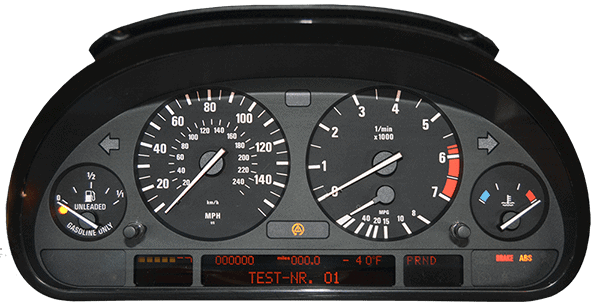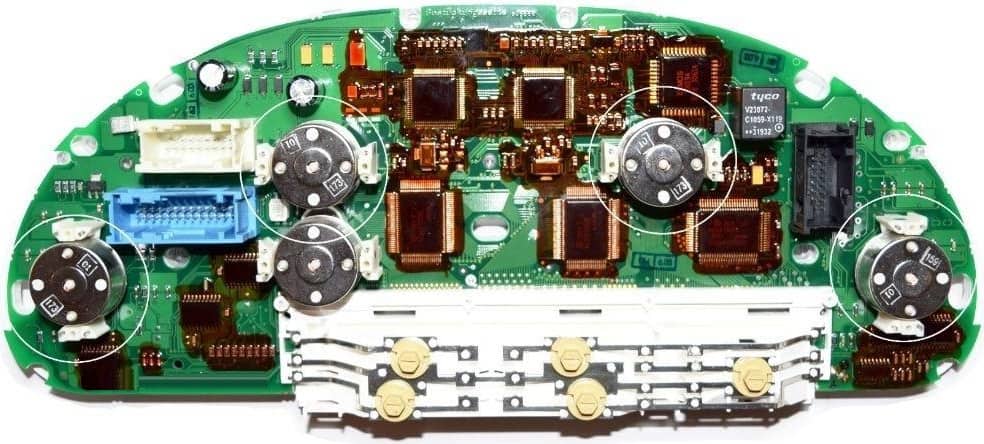Subjects:
- Instrument panel
- Indicator lights
- Tachometer
- Digital or analog input for the tachometer
- Interactive digital instrument panel
- Stepper motor
Instrument panel:
In almost every dashboards mounted instrument panel. This can be either analog (with moving needles) or (partly) digital. In the instrument panel are the gauges (tachometer, coolant temperature gauge, tank level gauge, speedometer), the clock and odometer, the airbag indicator lights, ABS/ASR, coolant level / oil level light, parking brake warning light, alternator (battery) light, etc.
An on-board computer is also integrated into the instrument panel in the image below. This shows the temperature of the engine oil, consumption, average speed, a stopwatch, etc. There may also be an RDS display in the screen of the on-board computer (the radio stations and the RDS text are displayed in it).
Many cars also have the immobilizer programmed into the instrument panel. If the responder in the key is not recognized, the engine will not start. The car can only be started when the code transmitted by the key is recognized by the immobilizer in the instrument panel. This is a protection against theft and is also called a class 1 (alarm/security) system. The immobilizer light is also illuminated in the picture below (the car with the key at the top right). The keys must be programmed using a readout computer via the OBD plug.
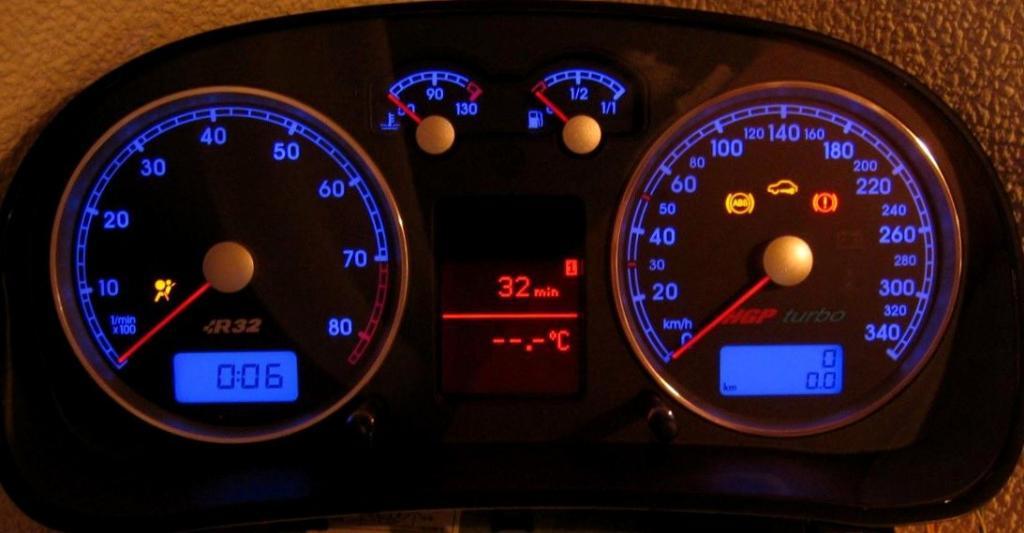
Indicator lights:
There is often a lot of uncertainty about the meaning of the indicator lights that can light up in the instrument panel. Below are many common lights that may illuminate with their meaning and possible causes:
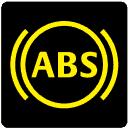
ABS: Failure in the ABS system (possibly in sensor, cable or control unit).

Battery: Possible alternator malfunction. This light is always on when the ignition is on and the engine is off. As soon as the engine is started, this light goes out if the system is functioning properly.
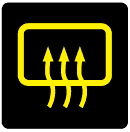
Heated rear window: This light is usually not displayed in the instrument panel, but on the rear window heating switch.

Airbag: This light indicates a fault in the airbag system. There may be a problem in the wiring, in an airbag component, in a crash sensor, or in the control unit.

General warning: Usually this light is accompanied by a text warning such as; close the door before driving off, etc.
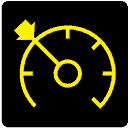
Cruise Control: The cruise control light can also be green or red (depending on brand). The light will illuminate when the cruise control is turned on or off.

Lighting Message: A faulty lamp has been detected by the system. The driver will have to check which lamp is defective.
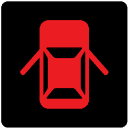
Door signal: One or more doors are open.

Hazard light: This symbol is always on the hazard light switch, which should be used in situations where other road users need to be alerted to a potentially dangerous situation.

Glow plug: On a diesel engine, the glow plug is displayed if there is a problem with the glow plug system. On some models of the VAG group, this light also comes on if the brake light switch is defective, or if all the brake light bulbs in the car are defective.
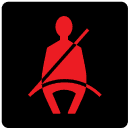
Seat belt warning: If the driver or co-driver does not fasten the seat belt, the light will come on (possibly in combination with an audible signal).
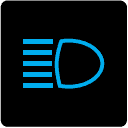
High beam: This indicator light comes on when the high beam is switched on.
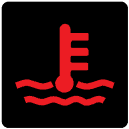
Engine cooling: The engine cooling system has overheated; possibly due to a low coolant level, lack of cooling due to a faulty cooling coil or a faulty sensor.
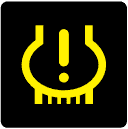
Tire Pressure: This light comes on when the tire pressure monitoring system has detected a flat tire. This light can also be red (depending on the brand). Stop the car at the next opportunity to check the tire pressure or to carry out repairs or to fit the spare wheel.
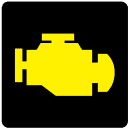
Engine Indication Lamp (MIL): The MIL will illuminate when an engine fault has been stored. It may also come on along with an EPC (emission) light.

Rear fog lamp: The rear fog lamp indication must be illuminated on either the switch or the instrument panel when it is switched on.
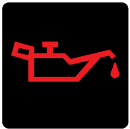
Oil pressure message: If the oil can is lit red, there is a problem with the oil pressure. Stop the engine immediately to avoid engine damage. Possible causes are; an oil pressure that is too low due to a defective oil pump, clogged pipes / strainer, a much too low oil level, etc.
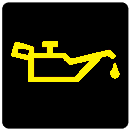
Oil level message: With a yellow oil can, the driver's attention is drawn to an oil level that is too low. The level will be at or below the minimum arrow and will need to be topped up as soon as possible.
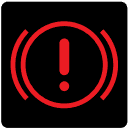
Brake system: The light has multiple functions; as an indication of the handbrake applied, as a warning of low brake fluid level and as a message for worn brake pads.

Direction indicators: One of the arrows will light up when indicating direction.
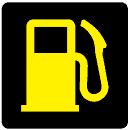
Tank level message: If the tank light comes on, the tank level is very low. When the tank light is on, we also speak of the "reserve" that usually amounts to around 5 liters of fuel. So it must be refueled very soon.
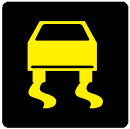
Anti Slip Control: The ASR / DSC is disabled. This may be due to a malfunction or manual shutdown.
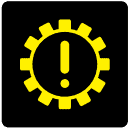
Transmission Malfunction: There is a malfunction in the automatic transmission (gearbox). Possibly due to an oil level that is too low, worn clutches or worn brake tires, so that internal slip has been detected.
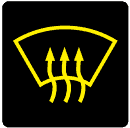
Windshield defroster / heating: With a fogged or frozen windscreen, it can be heated to get a good view.
Tachometer:
The tachometer is a part of the instrument panel and indicates the number of 'revolutions' that the engine makes. The revolutions per minute are measured at the crankshaft and recorded by the crankshaft position sensor. When you accelerate or release the throttle, the meter will indicate the crankshaft speed, i.e. the engine speed. For example, if the meter reads 30, this must be multiplied by 100. (It also often says x100). This means that the motor makes 3000 revolutions per minute. When this 3000 is divided by 60 (3000/60), the result is 50Hz (Hertz). The motor then rotates at 50 rotations per second. For example, any RPM can be divided by 60 to calculate the rotational speed of the crankshaft in seconds.
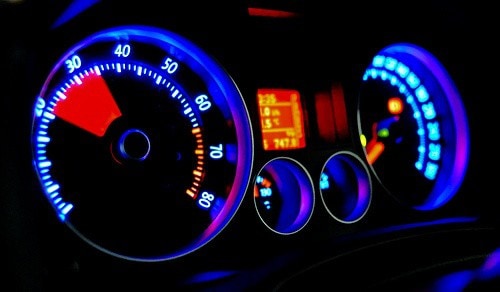
Digital or analog input for the tachometer:
In modern cars, the crankshaft speed is measured by an impulse sensor. A certain part is always recognized on the flywheel (by a wide or missing tooth on the sprocket) which rotates past the sensor with each rotation of the crankshaft. Each time this part rotates past the sensor, the sensor measures that the crankshaft has been turned by one revolution. The sensor measures the number of revolutions in a certain time and transmits this to the engine control unit and to the tachometer in the instrument panel.
Click here for more information on the crankshaft position sensor, where the operation of both the inductive and Hall sensors is explained using scope images.
Until the 90s, cars were not equipped with computers and (digital) sensors. Mechanics still had the upper hand. The tachometer was therefore not yet controlled by an ECU. In cars of that time we find the following techniques:

- A mechanical connection between the gearbox and the tachometer: a flexible, rotating cable transfers the movement of the gear in the gearbox to the tachometer. In the gearbox, the cable is driven by the input shaft (gearbox input shaft);
- Electrical signal from the ignition coil: the interruption of the primary coil gives a pulse for the tachometer. The amount of alternating pulses per unit of time gives the tachometer input to indicate a speed in rotations per minute;
- Electrical signal from the distributor: In the distributor in a conventional ignition system, the rotor rotates to direct the energy from the ignition coil to the correct spark plug wire. A (rotor) plate with notches is clamped to this rotor, which rotates along the hall sensor. The magnetic field between the permanent magnet and the notched rotor plate changes with rotation. The Hall sensor converts this magnetic field into a square-wave voltage. An increasing crankshaft and thus rotor speed results in a higher frequency of the block signal. The tachometer translates this block signal into a speed in revolutions per minute.
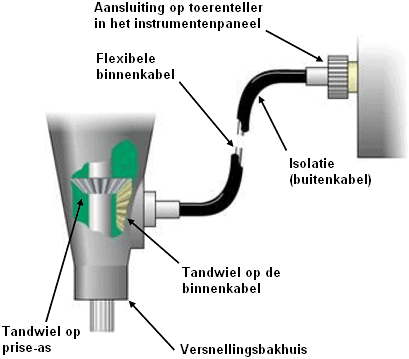
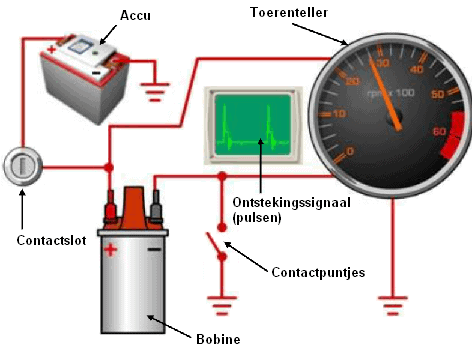
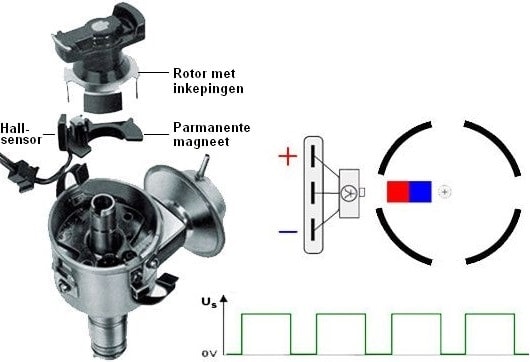
Interactive digital instrument panel:
In more and more cars, the instrument panel with analog hands is being replaced by a digital instrument panel. It concerns an LCD screen with possibly some physical control lights.
All instruments are fully visualized by software. The image shows the digital instrument panel of an Audi. The navigation screen is displayed between the tachometer (left) and speedometer (right).
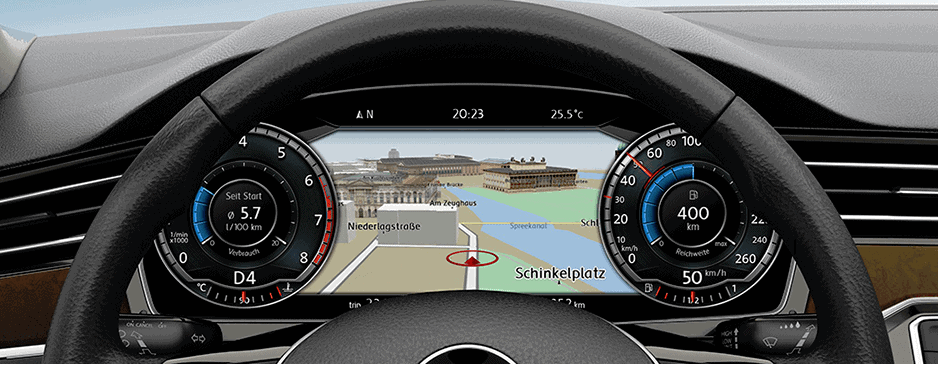
The digital instrument panel offers many advantages over the conventional analog clock panel:
- Navigation maps can be displayed zoomed in in the direction of travel, while the radio/infotainment screen in the center console shows a top view. The two navigation views provide the driver with a good overview of the route;
- Instead of the navigation maps, images of telephone contacts, radio stations, CD covers, nightvision (night view), traffic sign recognition and a torque / power meter can also be shown;
- The display can be individualized to the driver's needs. Think of the display of the meters (large / small), a different color, or the display of extra or fewer functions. The round clocks can also be replaced by another type of interface, so that the speed is only displayed numerically.
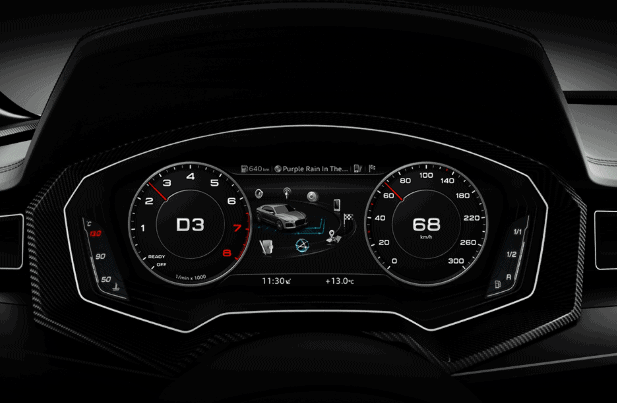
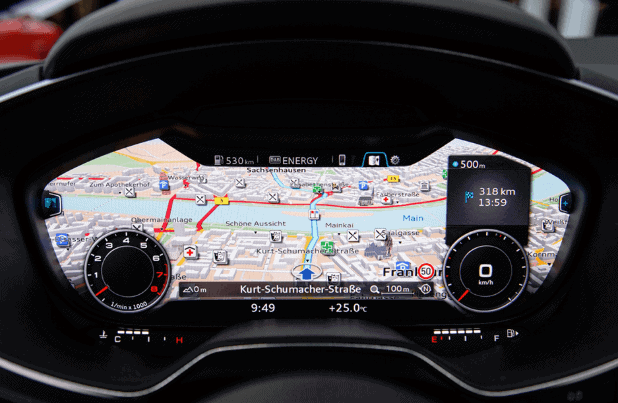
Stepper Motor:
An instrument panel often contains several stepper motors to move the hands. The images below show the combi-instrument panel (front and inside) of a BMW. On the page about the stepper motor we will take a closer look at the operation and applications of the stepper motor.
